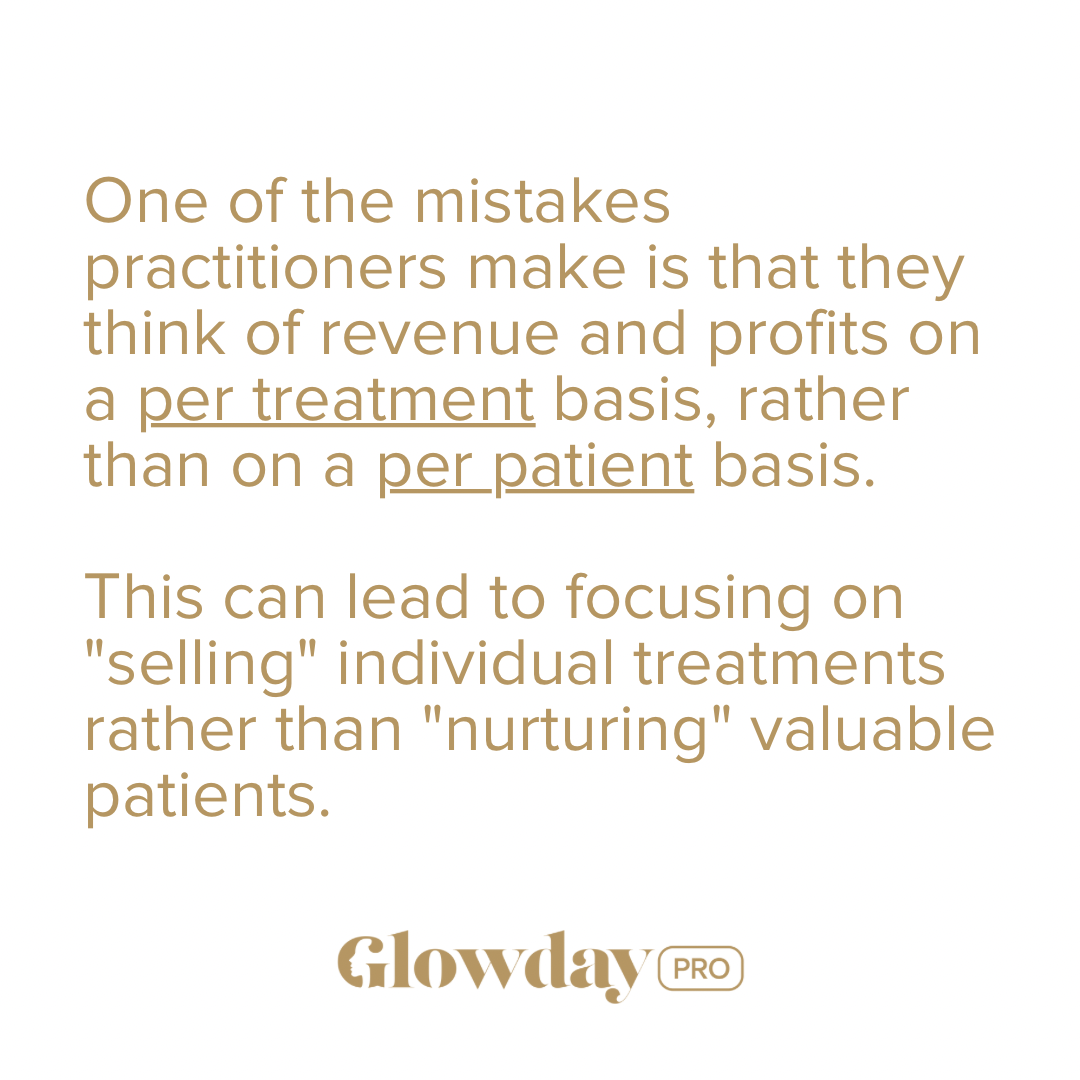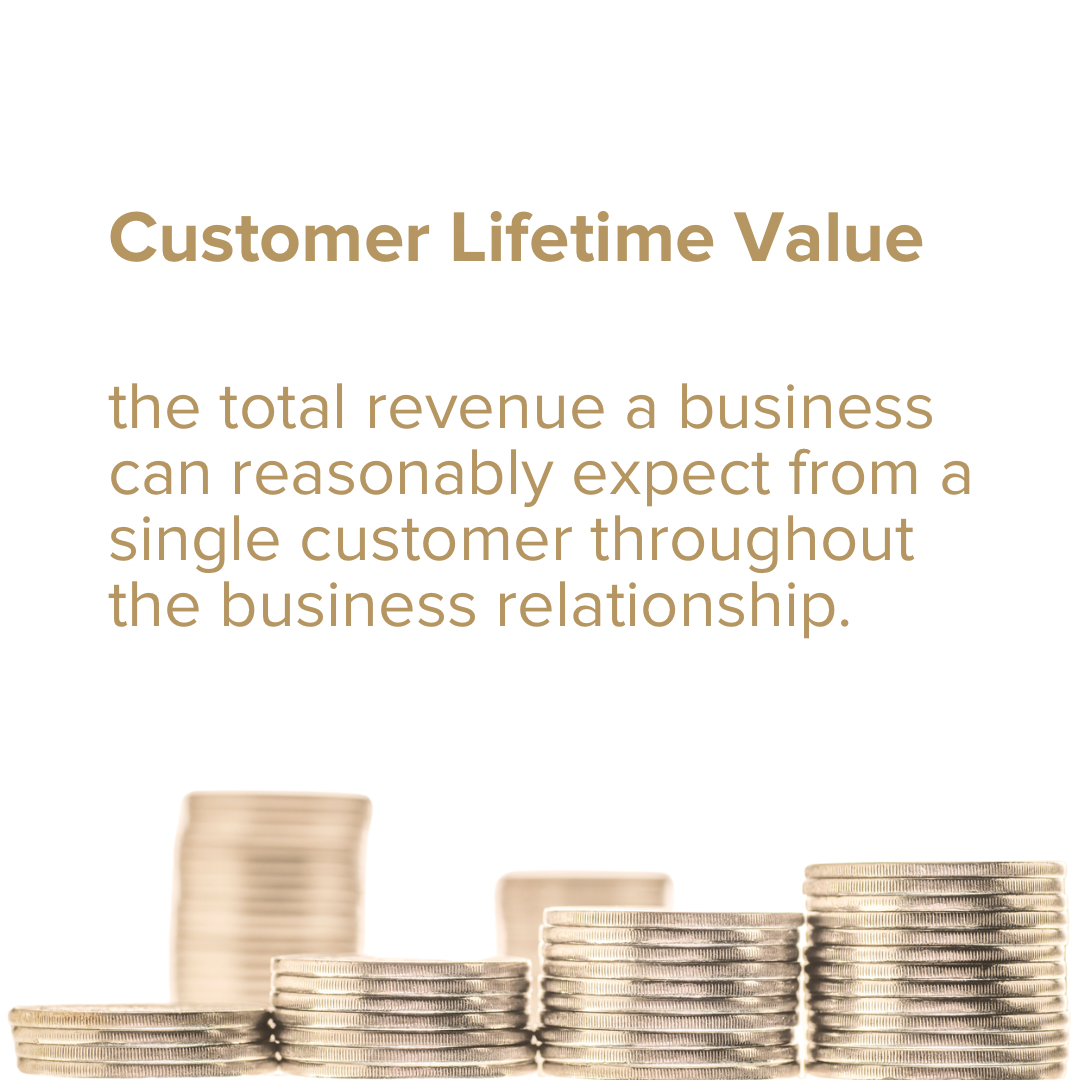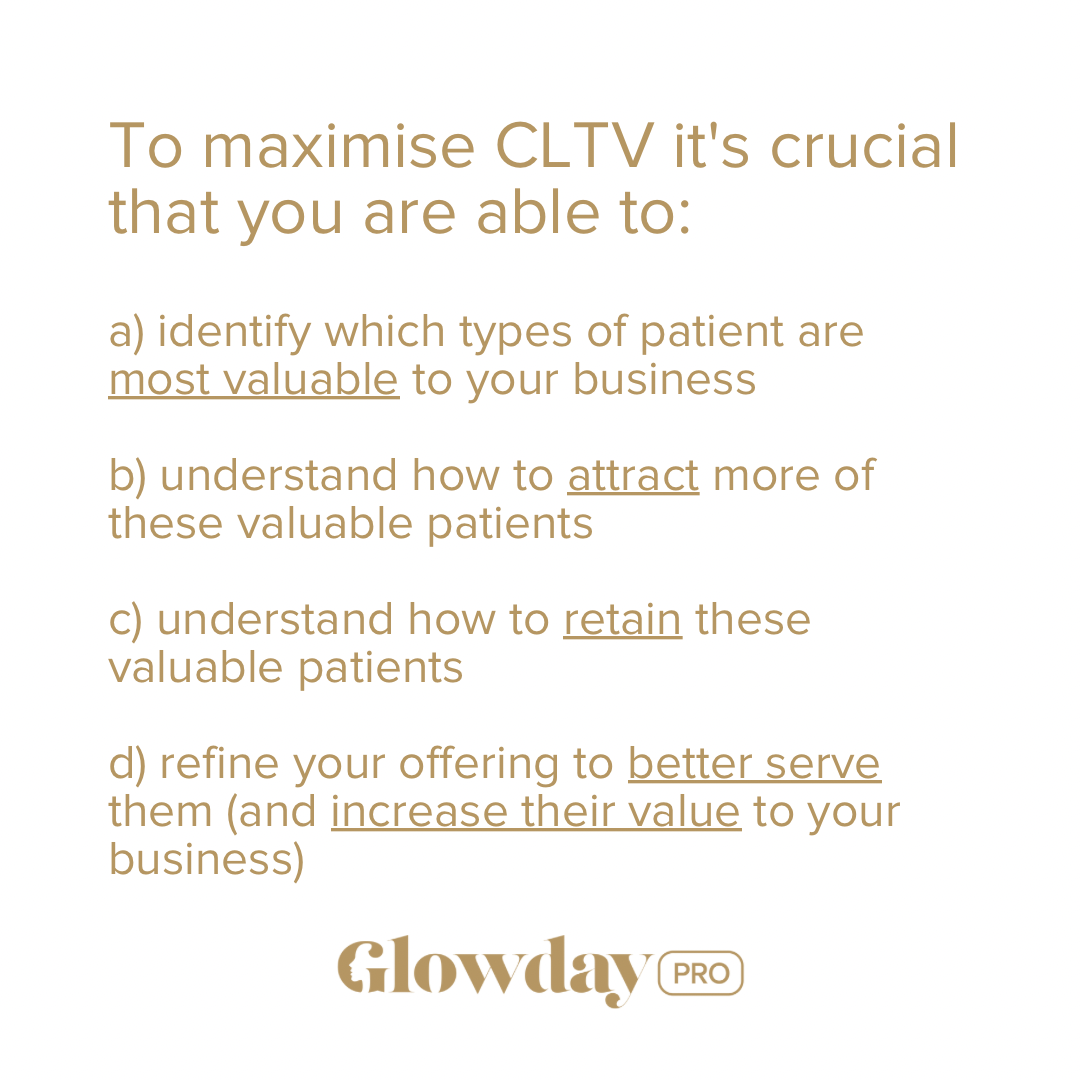Understanding Customer Lifetime Value: How to Calculate and Boost Your Revenue?
What’s one patient worth to your business? Are all your patients worth the same? How much is it appropriate to invest in attracting new patients? How much should you spend retaining existing patients?
I don’t imagine many aesthetic practitioners could answer these questions. Yet most would likely be able to state which their most popular and profitable treatments are.
This is because the vast majority of practitioners don’t think of revenue and profitability on a per patient basis, instead they focus on individual treatments rather than nurturing patients.
This is where Customer Lifetime Value (CLTV) is handy. By knowing the CLTV of your patients, you can make better marketing, training and retention decisions, resulting in increased profits.
What is Customer Lifetime Value?
CLTV is a metric that represents the total amount of money a customer is expected to spend on a company's products or services over the course of their relationship with that company. It takes into account factors such as the customer's purchasing behavior, frequency of purchases, and the length of their relationship with the company.
Calculating CLTV can help you make better decisions about how to allocate time, money and effort on marketing and training. By understanding which patients are likely to be the most valuable in the long term, you can tailor your marketing, treatment offering and customer service efforts to focus on those patients, ensure they receive the best possible experience, whilst making it easier for you to attract more patients just like them.
CLTV can also help you identify opportunities for growth - increasing the average appointment value by layering in skincare/medi-facials or increase the number of visits per year by educating patients on the need to be consistent with regular collagen-boosting treatments/facials and optimising their skincare routine.
Additionally, it can help you identify areas where you may be losing money. By calculating CLTV for your patient personas, you can avoid investing too heavily in patients who are very needy/time intensive but are unlikely to be particularly profitable in the long term.
How do you calculate CLTV?
It’s pretty straightforward.
The first step is to group your patients into broad segments. For example, you could look at the typical treatments they book:
the “just a bit of Botox” regulars
the “skincare savvy” ones
the “injectables aren’t for me” evangelists
the “I’ll have whatever you advise” group
Pick around 10 patients from each segment and from these, calculate:
Their average appointment value
The average number of appointments per year
The number of years they’ll likely visit you
Then multiply them together to calculate the CLTV per patient persona.
CLTV = Appointment Value x Appointment Frequency x Customer Lifespan
They’re not all worth the same?!
If you’ve segmented your patient groups well, you’ll find that you have patients who aren’t particularly valuable to your business and those who really really are! These will be the ones who you’ve created an exceptionally trusting relationship with, who listen to your advice. They come to you for skincare, injectables & device-based treatments. This is a win-win situation, as they’re happy that your expertise and skills help them feel and look great, and the value they bring to your business is significant.
It’s not unusual for businesses to have a core of customers who generate most of the revenue. The "Pareto Principle" or the "80/20 rule" states that approximately 80% of a business's revenue comes from 20% of its customers. Find your 20%.
What gets measured gets managed
By knowing the profile of your most profitable patients, you can calculate how many of them you need to generate the revenue you need to achieve your business goals.
How can I increase CLTV?
There are plenty of ways to increase Customer Lifetime Value, here are just a few:
a) know your perfect patient personas - identify which types of patient are most valuable to your business and build out personas for these patients. It’s these you are creating content for, who you are speaking to on social media, who are writing to in newsletters. Know clearly who you are trying to reach.
b) nurture new leads - new follows, likes, phone calls, introductions, emails...however a potential new patient tries to connect with you, ensure you respond to those leads, nurturing those which are likely to be just right for your business. It's likely that it's taken time and courage for that person to reach out. Friendly responsiveness lays the foundations for trust building.
c) firm your boundaries - you cannot be everything to everyone. You should have a clear idea of who you want to attract. You will need to hone your filter and firm your boundaries to ensure that you’re protecting your time and energy, reserving it for those who will allow your business to grow and flourish - and who benefit from that growth directly. It’s very easy to get stuck in the weeds with low value, needy patients. Firm boundaries are a good filter.
d) hone your consultation - your consultation process is key. Not only is it an opportunity for you to understand intimately, the patient in your treatment chair, it’s an opportunity to learn more about your target patient AND it’s the perfect place for you to educate patients and position yourself as an expert. Do not rush consultations. Do reflect on how you consult. Do experiment and continually refine your consultations.
e) refine your offering - once you intimately understand what your patients pain points are, you will be better able to curate your service offering to best meet their needs and address their concerns. Complementary/adjacent treatments, skincare, lifestyle advice all serve your patients and benefit your business.
f) retain and re-engage - acquiring a new customer can cost five to seven times more than retaining an old one, yet very few practitioners have an active patient retention plan. Social media, blogs, newsletters, personalised emails and loyalty schemes are all ways to re-engage and retain patients.







